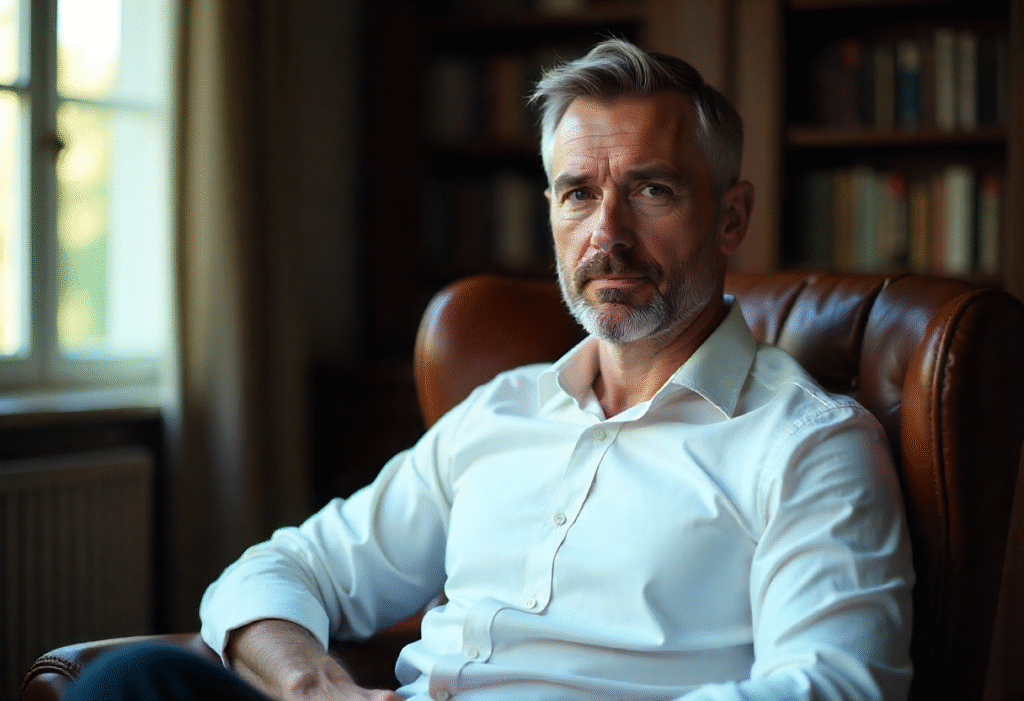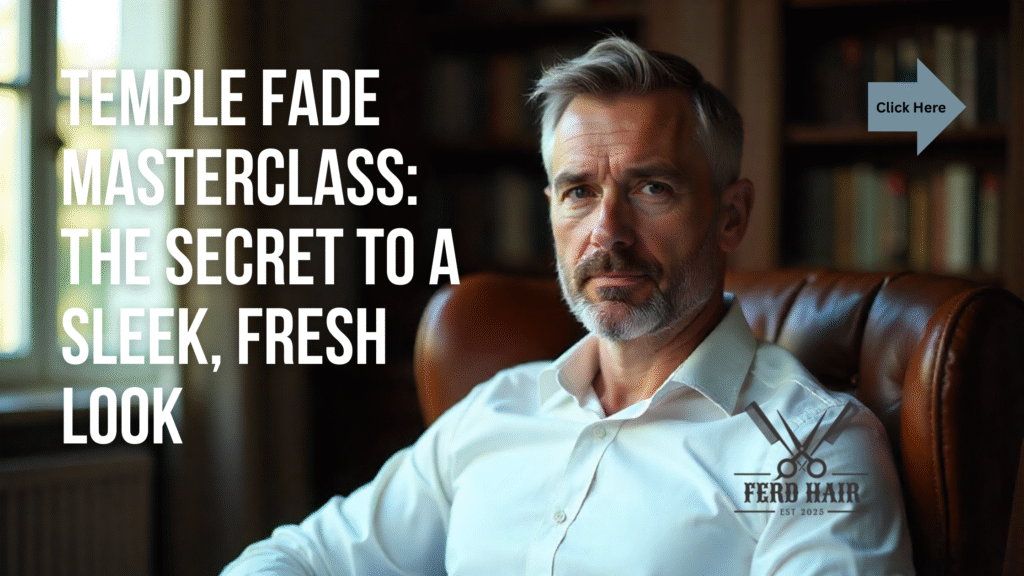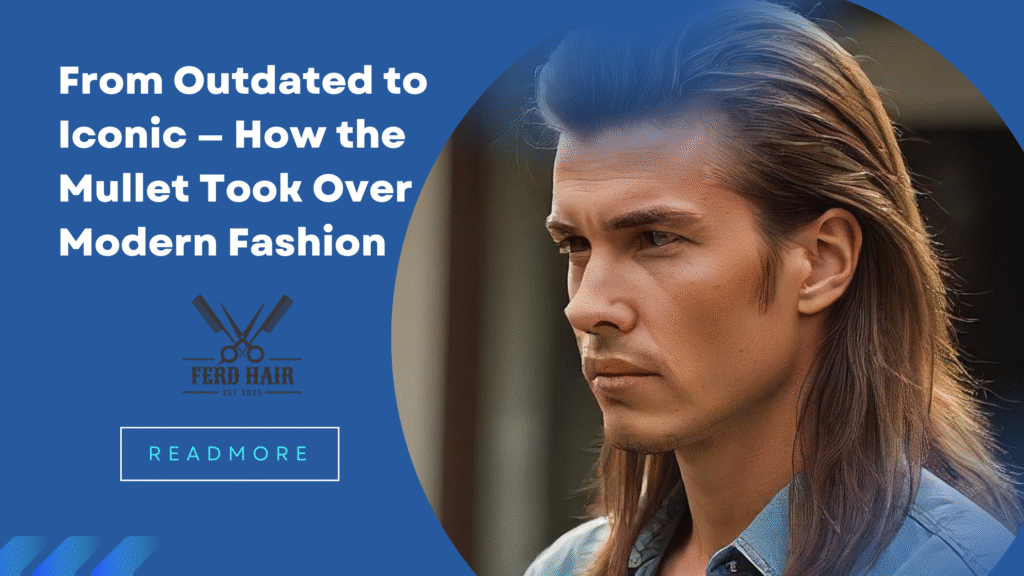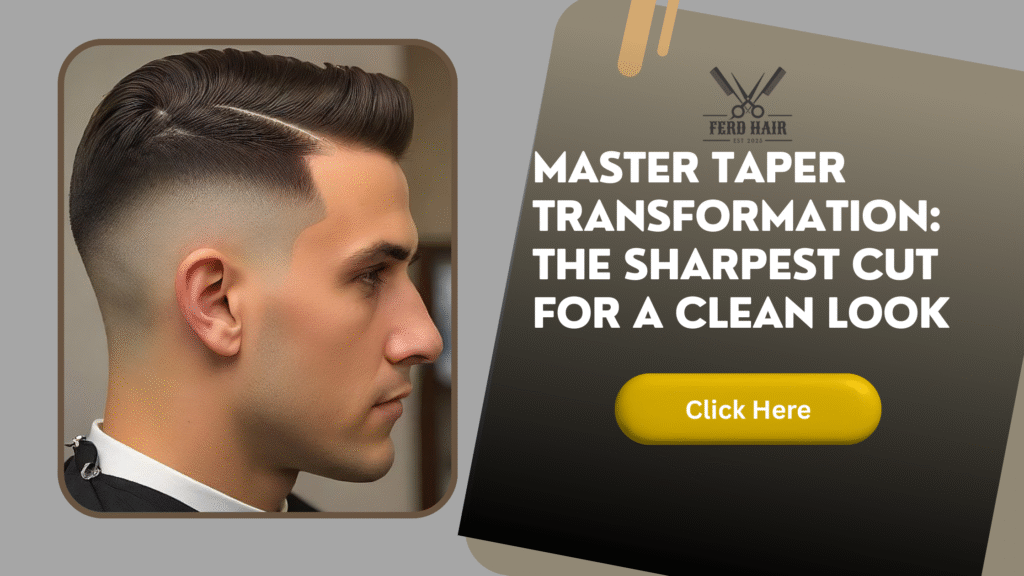Table of Contents
Introduction: Why the Temple Fade Is More Than Just a Haircut
The Temple Fade is not a mere hairstyle, it is also a modern classic combining sharp detailing with a relaxed style. A Temple Fade is, at its simplest, a haircut in which the hair is tapered in a downward manner around the temples and to form a clean, fresh contrast between the sides and the top. The Temple Fade is an unusual and fashionable variation of the traditional fade that only extends along the sides and back, instead of the sides.
Why are modern men then so into the Temple Fade? Its versatility is the key to the answer. The Temple Fade is the perfect frame whether you have a short, curly, braided, or even an afro. Being professional enough to be worn to the office and yet bold enough to be worn in a casual and stylish set up. It is trendy among men as it balances on the edge of nothingness and obnoxiousness.

The Temple Fade offers something extra to aesthetics in the form of confidence and sharpness. A clean fade on the sides of the temples will bring facial features that make you look fresh, youthful, and groomed. It is not the haircut per se, but what presence it produces. In the right Temple Fade, you walk out looking cooler, better dressed and more confident.
What Is a Temple Fade? (Breaking Down the Style)
The Temple Fade or Brooklyn Fade or Temp Fade is a current haircut where the fade is concentrated around the temples to achieve a sharp cool-looking transition between long hair on top and shorter and tighter tapered hair on the sides. Whereas a more traditional fade drew the focus into the temples, fading down on both sides of the sideburns and the neckline, the Temple Fade maintains the focus high and tight at the temples, which project out to frame the face in a very eye-catching manner.
Definition and Origin of the Temple Fade Haircut
The Temple Fade, originally worn in the 1980s and 1990s in New York, however, spread within urban communities as a result of its hipster appearance. Over time it found its way to other cultures and gained mass-market appeal, thanks to celebrities, athletes and barbers who gave it a makeover. The Temple Fade is now being hailed as a multipurpose cut that fits just about any type of hair–from straight to curly to coiled.
Key Differences Between a Temple Fade and Other Fades
Although this may sound like a taper fade or low fade, there is a signature twist to the Temple Fade:
- Taper Fade: Hair is cut to progressively get shorter over the entire head, the sideburns and the neckline.
- Low/High Fade: centers on sides and back and is mixed much lower or higher based on preference.
- Temple Fade: Lays the fade all around the temples with a sharp edge or lines up to create a crisp finish.
Simply put, the Temple Fade is smaller and more localized, which makes it appear unique and fresh, unlike the larger fades.
Why It Works With All Face Shapes
Universality is one of the finest aspects of the Temple Fade. The fade being concentrated at the temples automatically provides structure and balance to the face.
- Rounded faces: The angular lines are defined and angled.
- Oval faces: The fade is more symmetrical and is clean-cut.
- Square or angular faces: The design mellows the prominent features with a manish touch.
- Long faces: The temple detail separates length and forms more favourable proportions.
This flexibility allows the Temple Fade to be one of the most accommodating and varied fades today- no matter what kind of face, or what kind of hair you have, it fits.
Check Out: The Shocking Truth About Skin Fade Haircuts
Why the Temple Fade Is Perfect for Any Occasion
The Temple Fade is beautiful because of its flexibility. Fade fits the boardroom so well, on weekends and even high-profile functions; compared to other hairstyles that are only suitable for certain life or situations. This is why it has turned out to be one of the most popular and requested haircuts among men nowadays.
Professional Settings – Neat and Polished
Appearance in the workplace plays an important part in confidence and first impressions. The Temple Fade is the ideal combination of professional and stylish. You get a clean, well-groomed, elegant appearance because of its crisp lines and temple detailing without being excessive. It easily transitions into professional and corporate worlds when combined with a side part, short hair or even a textured crop.
Casual Looks – Stylish Yet Low-Maintenance
The Temple Fade is a casual, relaxed piece out of the office. The temple taper is an easy way to wear your hair in curls, braids, twists, or even an afro, and still have room to play around. It is also easy to care for, unlike more fancy cuts, which means that you will leave looking good without having to spend hours in front of the mirror styling your hair.

Special Events – Bold and Fashion-Forward
The Temple Fade also provides an added advantage when you have to impress like at weddings, parties, or night outs. It also has a clean fade that frames the face to perfectly highlight your features and balances out more dramatic hairstyles on the top, like a pompadour, textured quiffs, or locs. It has become a bold style, fashion-oriented, turns heads but does not seem vulgar.
Temple Fade vs. Other Popular Fades: Which One Wins?
There are so many different ways of fading, it is sometimes hard to tell what kind of fade suits you best. The Temple Fade has cemented its status as one of the most versatile and stylish fades, but just how does it hold up against other well-known fades such as the Taper Fade and Low/High Fade? Let’s break it down.
Temple Fade vs. Taper Fade
In the former example, the Temple Fade and Taper Fade can be confused, however, differences exist between them.
- Taper fade: This form of fade gradually blends the hair length around the base of the neck and the sides of the hairline. It’s subtle and professional.
- Temple Fade: This fade is focused on the temples and not the neckline. The extreme taper here gives a more distinct frame to the face.
Winner? When you want the faint one, you should go with Taper Fade. However, the Temple Fade is more fashionable and edgier, so should you desire your facial features to be noticed.
Temple Fade vs. Low/High Fade
Low fades and high fades are two of the most used types of fades, yet they are utilized to accomplish different things:
- Low Fade: It starts right above the ears and creates a perception of a smooth transition with a clean and slightly soft fade.
- High Fade: It starts at a much higher point on the head providing a very dramatic contrast between the top and the sides. It is quite bold and can be harder to wear in more formal locations.
- Temple Fade: The Temple Fade, unlike the two, only covers the temples, leaving the other part of the side and the back hair uncovered. This gives it a distinctive appearance that suits curls, braids, afros or even short styles.
Winner? The Temple Fade is a combination of professional and stylish, so in case you are looking for a stylish style that is not personal, the Temple Fade is your choice. It is not as dramatic as the high fade but more dramatic and trendy than the low fade.
Why the Temple Fade Stands Out
The Temple Fade is special as it is:
- Flexible: Wears with nearly all types of hair-do: curls, dreads, braids, afros, and straight hair.
- Univerally Appealing: Accentuates any part of the face by introducing sharpness and balance.
- Casual: Can be worn in business and career, casual wear, and even experimental fashion events.
- Unique: It does not happen to be the trendiest, such as low fade or high fade but appears to be more customized and stylish.

In simple terms, there is their place taper fades, low/high fades, but the Temple Fade strikes the right balance of subtle and bold; so, it is one of the most flexible types of fades you can create.
Conclusion: Why the Temple Fade Is the Upgrade You Need
The Temple Fade is not a haircut, but it is an upgrade to the style which is versatile, sharp, and modern. Contrary to other fades which emphasize the sides or the neckline, the Temple Fade emphasizes the temples, and frames the face in a way that suits almost all hair types and face shapes. Its flexibility: in work, in leisure, in daring events, it is one of the most flexible cuts you can have.
When you are considering a way to revise your appearance, the Temple Fade is the best place to start. It can be combined with curls, braids, afros, or even short and tidy, and it can be customized. The reason behind this is that, it is not just a trendy hairstyle that you are sporting, but it is also a statement that you make about yourself.
The Temple Fade is not merely a haircut, at its most fundamental level. It’s about confidence. This is because a crisp, clean fade can transform how you look and how you feel so you feel young, fresh and confident in yourself wherever you go.
For More Info: Click Here
Common Questions About the Temple Fade (FAQs)
Is the Temple Fade professional enough for work?
Yes—absolutely. The Temple Fade is among the few modern hairstyles that find an adequate balance between casual and professional. The clean lines and sharp taper of the temples leave you looking clean without seeming so blingy. Combined with short or medium-length hair on the top, it is barely noticeable in a business setting but still provides a modern touch.
Does a Temple Fade work with curly or textured hair?
Definitely. The Temple Fade is the most versatile and appears particularly crisp on curly, coily or textured hair. The top natural volume or texture contrasts with the fade around the temples, and the style is marked. Temple Fade not only fits the appearance of textured hair types with or without an afro, braids, twists, or even natural curls but it also gives the face a more defined appearance.
Can you do a Temple Fade at home?
Yes, technically–but it is difficult. The Temple Fade is a very exact way of doing things, and it takes skill, particularly to make the edges even and sharp. With the right guards and experience on how to use the clippers however, you can also try to do a basic fade at home. But to achieve that clean-cut professional appearance, it is always better to visit a good barber. Not only will a barber be able to do the fade in the style you desire, but they will also be able to make it fit your hair and your face shape.



